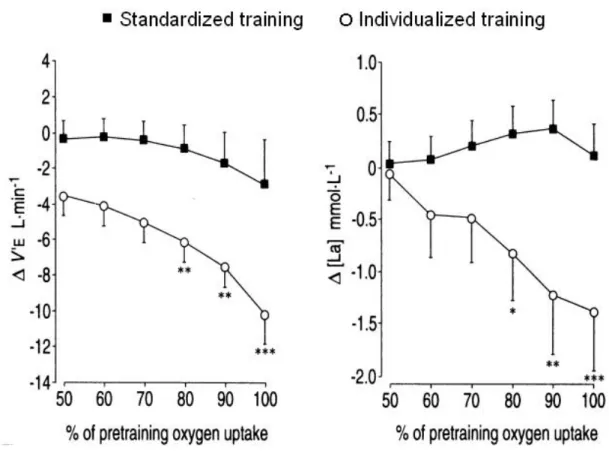Improving Health Status through Physical Activity for Individuals with Chronic Pulmonary Diseases
Texte intégral
Figure
![Figure 1. The vicious circle of hypoactivity illustrating how a chronic disease state can lead to functional deterioration [from Bar-Or (1985)]](https://thumb-eu.123doks.com/thumbv2/123doknet/14380579.505988/24.892.127.769.280.777/figure-vicious-hypoactivity-illustrating-chronic-disease-functional-deterioration.webp)

![Figure 3. Ventilatory kinetics [ventilation and respiratory equivalent for oxygen ( V ! E / V ! O 2 )] during incremental exercise prior to and after ventilatory threshold (VTh) appearance](https://thumb-eu.123doks.com/thumbv2/123doknet/14380579.505988/26.892.157.758.248.543/ventilatory-ventilation-respiratory-equivalent-incremental-ventilatory-threshold-appearance.webp)

Documents relatifs
Categories used were fluid intelligence (Matrix Reasoning test), crystallized intelligence (Similarities), general memory and learning (Digit Span and Letter-Number
In this special issue we invited researchers to contribute original research articles as well as review articles inves- tigating the role of high-intensity physical training in
Objective: To compare the lifetime pattern of physical activ- ity (PA) in chronic obstructive pulmonary disease (COPD) patients and sedentary healthy subjects (SHS) using a
Historiquement, les mouvements de main-d’œuvre recensant les embauches (ou entrées) et les fins de contrats (ou sorties) par nature de contrat (CDI ou CDD mais hors
Pour le Conseil supérieur de l’éducation, le principal enjeu de ce thème est le rôle éducatif des commissions scolaires et l’exercice des responsabilités de chacune des
[r]
In average, students in the short rhythm group finished 2.20 hours earlier, had 50 min per day less time in recess and spent 9 hours per week less time in the
In this Research Topic, a series of reviews and original articles provide a timely survey of mechanisms leading to respiratory tract bacterial infections that occur following
